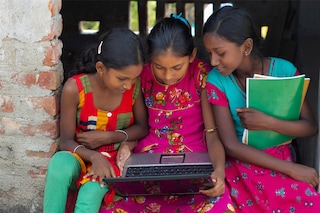Democratising Education in India: Breaking barriers and building bridges
Democratising education in India means making it inclusive, equitable, and accessible to all, irrespective of socio-economic background. Here's how it can be done


While India has many top educational institutions of world standard, like the IITs, IIMs, AIIMS and other top colleges, beyond the first tier, there is a large vacuum in quality higher education opportunities. This is especially true for Tier II and smaller cities and towns. The top institutions offer admission to a fraction of the aspirants who are privileged enough to afford it. With a burgeoning population and a dynamic socio-economic fabric, there is an urgency to bridge the chasm between the academically privileged and the masses and make education accessible and affordable, transcending traditional barriers.
Education is a fundamental right and a critical tool for socio-economic mobility. Democratising education in India means making it inclusive, equitable, and accessible to all, irrespective of socio-economic background. This is not just a moral imperative but an economic one, too. According to a World Bank report, equitable education can substantially increase India"s GDP growth.
India, with its vast and diverse population, faces a unique challenge in education.
The advent of digital learning platforms has begun to bridge the educational divide. Massive Open Online Courses (MOOCs), e-learning portals, and government initiatives like SWAYAM (Study Webs of Active Learning for Young Aspiring Minds) are pivotal in this transformation. These platforms offer a range of courses from top universities at minimal or no cost.
The Indian government"s push towards digital education, especially during the COVID-19 pandemic, has been commendable. SWAYAM, for instance, has provided over 2,000 courses, with over 25 million enrolments. This indicates a growing acceptance and reliance on online education as a viable alternative, making quality education accessible to learners nationwide.
The steps taken today towards democratising education will empower individuals and propel the nation towards a brighter, more inclusive future. As Nelson Mandela famously said, "Education is the most powerful weapon which you can use to change the world."
By Professor K Ganesh, a serial entrepreneur and adjunct faculty member at IIMB. He is known for his ventures BigBasket, BlueStone, etc., and is the first practitioner faculty to create a MOOC with IIMB.
First Published: Jan 25, 2024, 12:50
Subscribe Now